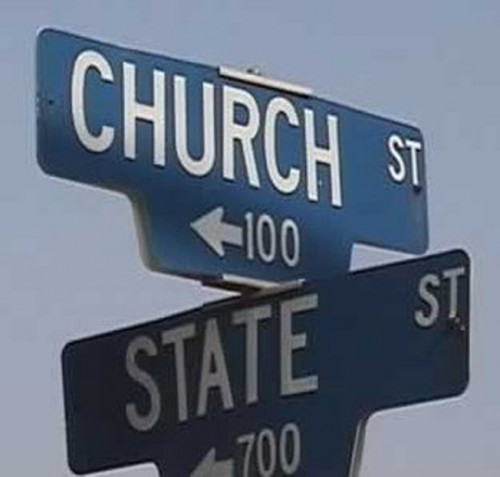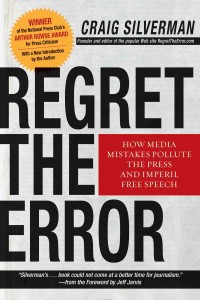 Katherine Stewart is the author of an upcoming book with one of those calm, reasoned, fair-minded titles that have become so common in the American marketplace in the past few decades -- “The Good News Club: The Christian Right’s Stealth Assault on America’s Children.”
As you would expect, she is not particularly fond of religious conservatives.
Katherine Stewart is the author of an upcoming book with one of those calm, reasoned, fair-minded titles that have become so common in the American marketplace in the past few decades -- “The Good News Club: The Christian Right’s Stealth Assault on America’s Children.”
As you would expect, she is not particularly fond of religious conservatives.
As you would expect, she would be a totally logical person to write an op-ed page piece in the New York Times that, under the headline "Separation of Church and School," includes some frank information about an interesting conflict on the Upper East Side of Manhattan. It seems that an evangelical congregation is, under local access laws, meeting after hours and on weekends in her local public school building.
As you would expect, Stewart is not amused:
Ours is just one of at least 60 New York City schools that have doubled as rent-free houses of worship -- the vast majority of them evangelical Christian churches -- in their off-hours. Many have little connection with the school communities. It’s hard to imagine, for example, that the Village Church at Public School 3 in the West Village -- a church that runs a Gender Affirming Ministry Endeavor associated with the movement to “cure” gay men and lesbians -- is representative of the neighborhood.
A number of the new churches are the work of national “church-planting” organizations attracted to New York by the combination of cheap space and the opportunity to save the city from its apparent godlessness. Some are closely associated with national groups known for their hostility to “government education.” The church that meets at my daughter’s school is associated with a movement that instructs its members to pray for a Christian “reformation” of American education and for the election of like-minded political leaders.
And, as you would expect, this editorial includes a summary of some of the church-state law that looms over this conflict:
The situation originated in a 2001 decision, Good News Club vs. Milford Central School, in which the United States Supreme Court appeared to suggest that keeping religious groups out of schools after hours amounted to discrimination against their religious views. Subsequent federal rulings effectively forced the city to open school doors to nearly any religious group that asked for the privilege. But since school facilities are often available only on Sundays (when sports teams and extracurricular clubs are less likely to need space), Jews and Muslims, for example, were mostly shut out.
On June 2, the United States Court of Appeals for the Second Circuit ruled that the city could restrict religious congregations from conducting worship services in schools. To exclude an activity from a school because it is religious in nature, Judge Pierre N. Leval wrote, is not to discriminate against it on account of its religious viewpoint. Indeed, the school system does not give access to partisan groups, and no one supposes that they are losing their freedom of speech just because they can’t get free space. Using the school system to subsidize houses of worship, on the other hand, risks violating the Constitutional ban on the establishment of religion.
So, Supreme Court bad. Second Circuit court good. Got it.
The obvious question is this: What the Times has here is a major news story. Why are we reading about it in the op-ed pages, in an essay written by a participant on one side of the conflict? Try to imagine the Times running a similar essay -- with no response from the other side -- by a leader in the efforts to defend these churches and their rights.
I should also mention something that is not mentioned in this advocacy piece. What we appear to have here is a school system that is applying the principles of equal-access laws, similar to the laws that govern student groups that meet before and after school hours (and perhaps during lunch).
The core principle is that the schools must treat different groups and, thus, different subjects equally. The schools can -- yes, can -- refuse space to religious groups, simply by denying use of the space to all groups equally. No Bible student-led Bible studies? Fine. No chess club. No Wiccan book club? Fine, no environmentalists club. The goal is not to practice unique discriminate against religion and religious groups.
Thus, it appears that Stewart's school could turn this church away, simply by closing its doors to all outside groups. Discriminate against all and, thus, do not discriminate. It could (and I would say should) charge all of these groups according to a common set of fees. Again, no discrimination.
So what is the issue? The issue appears -- again, we are reading an op-ed piece -- is that opponents are saying that churches are now "partisan groups," as in politically partisanship. In other words, the church proclaims its moral doctrines on moral and religious questions in word and in deed, in worship and in works.
Now that's a subject for an in-depth Times report by a team or journalists. One would have to be very careful to offer accurate, balanced and informed views by experts and partisans on both sides. The journalists would have to be careful not to omit key facts in this complex and heated debate -- such as the details of the actual law being discussed.
I mean, this is an important news story. It should be addressed -- at least at first -- with serious journalism. Correct? Op-ed columns come after a story has been covered in a professional, journalistic manner.
Also, Times editors could run a pair of dueling op-ed page essays by people on both sides. Otherwise, the Times would be publishing PR, not journalism.
 CORRECTION: First, a thank you to readers who caught my error and to religion-beat veteran Laurie Goodstein for her respectful request for a correction. Especially this part:
CORRECTION: First, a thank you to readers who caught my error and to religion-beat veteran Laurie Goodstein for her respectful request for a correction. Especially this part:
I will assume that something went amiss in your search of Nexis or the nytimes.com website before you made the claims you did in this post.
First of all, I do not have a Nexis account and truly wish that I could afford a password. My mistake, this time, was rooted in the fact that my general searches on the site and through Google did not include the name of the court case. My mind was locked in on the substance of the op-ed itself and saw this as a story about the school and the church, not the court decision itself. Thus, I missed the court story that preceded the op-ed.
However, the most important point -- for me -- in Ms. Goodstein's note is her link to at 2005 Times story about these equal-access issues for churches, along with other public groups linked to other subjects and issues. That earlier news story includes some crucial information that, well, lets one know that this is a complicated subject with two sides. Here is one crucial passage from back then:
The lawyer for the Bronx Household of Faith, Jordan Lorence, said the church planned to ask the judge to make that order permanent.
"There are thousands of non-school-related community groups that meet every weekend in New York City school buildings," Mr. Lorence said. "We are not asking for any special treatment."
Mr. Lorence said he believed that New York State was "by far the most recalcitrant jurisdiction in resisting equal access for churches." Legal experts on various sides tend to agree that churches around the country have an easier time securing space for services in schools than those in New York.
"It's very common," said Tom Hutton, a staff lawyer for the National School Boards Association in Alexandria, Va. "The easy rule of thumb is, you just have to treat outside groups the same, religious or not."
"Rule of thumb"? Actually, these legal debates are much more specific and refined.
This earlier Times story is much, much better than the recent one -- although it would have helped to have mentioned the kinds of principles that inform and frame equal-access debates of this kind, principles knocked out, for the most part, by a broad church-state coalition in the years of the Clinton-Gore administration.
It now appears, according to the Times story I missed, that city Education Department officials are rethinking the entire concept of equal-access laws that banned discrimination based on religious content.
The city’s Law Department said Thursday that more than 60 “congregations” obtained permits to use public schools for regular worship services in the 2008-9 school year. The Bronx Household of Faith has been using Public School 15.
The Law Department also said the Education Department was reviewing “its next steps for groups that are currently holding worship services in city schools” and would not ask groups “to cease using school buildings for services before the end of the school year.”
That's an important story. Let's hope it receives balanced and informed coverage in the news pages, since there is much, much more to this story than a single court decision and an advocacy sermon in the op-ed pages. This could go back to the high court.
